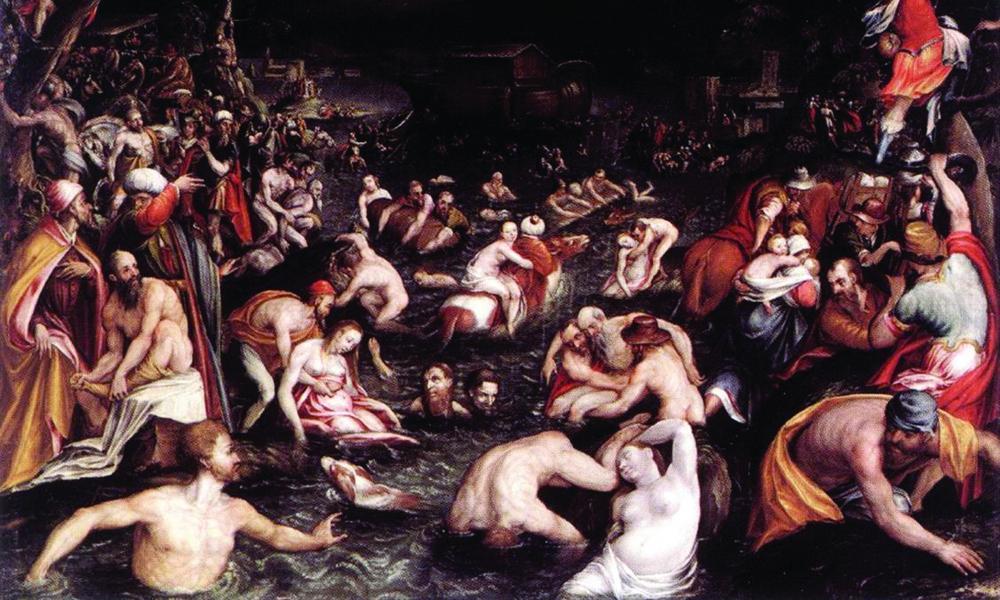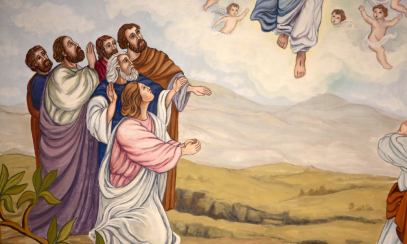
How Are We to Make Sense of God’s Justice in the Old Testament?
In the Old Testament, the people seem to experience God’s justice more so than God’s mercy. For example, God destroys all of the Egyptians and yet mercifully spares Abraham’s son, Isaac, but not Jephthah’s daughter. How accurate is this view of God and how are we to make sense of it?
First, it is important to note that we are dealing with narrative literature. This means that the texts are telling a story based on historical events, but with a theological purpose.
With this in mind, we also have to understand more about the Hebrew view of humanity when considering such concepts as the application of justice. For the Hebrews, identity originated and resided in the group. Identity was communal in nature. As such, what is good affects the whole group, just as what is bad affects the whole group. From this, we get the Old Testament saying, “The sins of the father are visited upon the children.” (Exodus 20:5) Consequently, one can begin to see why God’s justice seems to be applied in a blanket fashion.
In contrast, today we think in more individualistic terms. We see punishment as something merited by the individual and limited to the individual. This is a relatively new view of humanity, historically speaking, and contributes to the harshness we sometimes attribute to God in the Old Testament.
Interestingly, in the New Testament, the Church is dealt with as a community and not as individual Christians and/or disciples. Further, in Catholic thought, we speak of a treasury of the merits of the saints that we benefit from here and now. In other words, the Hebrew understanding of what is good is good for all and that sin affects all is continued into Christianity, although it is often muted in Catholicism in the United States today. For example, the celebration of the Mass and the reception of Holy Communion is not simply an act of individuals encountering Christ, but the encounter of a communion of individuals, the Church, with the Lord.
One other noteworthy consideration is the Hebrew understanding of justice. In the Old Testament, justice refers to “right-relationship,” whereas in English, and even in Latin, justice has a more legal connotation. To the Hebrews, the world was created in this “just” state. When things went wrong (here sin is understood as a disordering of the universe), there were consequences to the “right-relationship” being disrupted. We see this with Adam and Eve. With the disorder of sin entering the world, everything is “thrown off” and we lose ourselves in the process.
Then we come to the cross of Christ that sets things right again, or re-establishes justice, and delivers God’s judgment on humanity, i.e. mercy and forgiveness. So, in reality, there is no distinction between God’s justice and God’s mercy. Justice, or the right-relationship between God and humanity, which is the necessary condition for life, is one with mercy, or the proper spirit and use of power, which is that we may have life and have it more fully.
– Father Sheoenstene
The notion that the God of the Old Testament is a stern God, objectively meting out justice to people as their actions deserve is incorrect and is sustainable only when individual verses or texts are interpreted out of context. In some way, the Bible traces the slow path of human understanding towards true knowledge of God, knowledge that was finally revealed clearly in the incarnation of God’s Son. Along the early stages of this path, we find people acting on incomplete views of who God is and what God asks. An example of this would be texts in which God is perceived to command Israel to kill other peoples when, in fact, at the time, such killing is the only type of justice that people could imagine. It took more than 1,000 years of reflection on what God was teaching them through their experiences for people to see that, in the divine view, no killing of another human is acceptable. This long trail finally brought them to the point where they could at least intellectually understand Jesus’ teaching to “love your enemies; do good to those who hate you.” (Luke 6:27)
When the so-called “sacrifice of Isaac” is read in its context, we see that the author is not writing about God’s mercy to Isaac, but rather about the faith of Abraham. Genesis 22:1 states plainly that “God tested Abraham.” The horror of the command reveals what having faith in God entails.
The context of the story of Jephthah’s daughter is the Book of Judges, a book written down 600 years after the events it describes and whose purpose is to trace the downward spiral of the divine-human relationship that resulted from God’s people doing “whatever was right in their own eyes.” (Judges 21:25) The story of Jephthah occurs along the downward spiral. In this context, we see that God did not ask for a sacrifice from Jephthah. This was Jephthah’s bright idea. The story shows how wrong we can be when we forget about God and follow merely human traditions.
– Professor Nagel
Vatican II
Q: Did Vatican II represent a change in the Church’s understanding of Mary?
A: The Second Vatican Council devoted a full chapter in its Dogmatic Constitution on the Church (Lumen Gentium) to Mary. From the beginning, the council’s intention was never to offer a complete doctrine of Mary, rather, it wanted to reaffirm the Church’s special love for Mary and her connection to Christ’s work. In particular, the “change” the council sought was to unite the two very different understandings of Mary’s relationship with Christ to her relationship with the Church.
In going about this, the council asserted that Mary is rightly “acknowledged and honored as being truly the mother of God and of the redeemer.” At the same time, she is also “united to all those who are to be saved” by virtue of her humanity. Consequently, “she is clearly the mother of the members of Christ ... since she has by her charity joined in bringing about the birth of believers in the Church, who are members of its head.”
In this way, the council basically identified Mary as both the mother of God and the mother of the Church. Pope Paul VI would formally confer the title on Mary as mother of the Church during the closing of the council.
Q: What about calling for the establishment of a cult of Mary? Wasn’t this a change?
A: It is true that the council expressed its approval of, and encouragement for, rightly honoring Mary “by a special cult in the Church.” However, this did not represent a change. A cult of Mary always has existed in the Church, although it is different from “the cult of adoration, which is offered equally to the Incarnate Word and to the Father and the Holy Spirit.”
The council again emphasized that Church-approved forms of piety toward the Mother of God do not take away or add anything to the centrality and uniqueness of Jesus Christ. Instead they both honor Mary and ensure that the Son of God is “rightly known, loved and glorified.” For this reason, the council encouraged “all the sons [and daughters] of the Church” to generously foster the Church-recommended practices and exercises of devotion toward Mary.
Catechism quiz
Q: Prayer in the Church is a living tradition that includes words, melodies, gestures, and iconography that reflect historic, social and cultural contexts. Prayers can be communal or personal prayer, vocal or interior, yet all forms share in the one way of Christian prayer. What is this one way?
A: Jesus Christ. “There is no other way of Christian prayer than Christ … it has access to the Father only if we pray ‘in the name’ of Jesus. The sacred humanity of Jesus is therefore the way by which the Holy Spirit teaches us to pray to God our Father.” – CCC 2664



